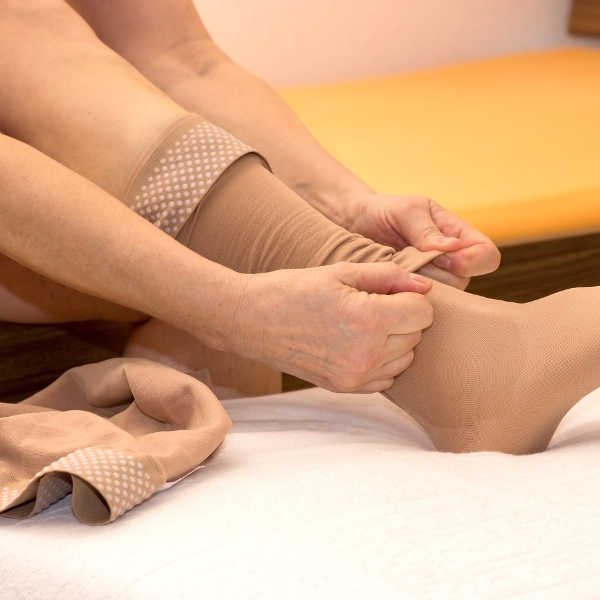Compression Therapy
What Is Compression Therapy?
Compression therapy is simple: a person wears a compressing garment around his or her legs. Compression socks are designed to help prevent the occurrence of various venous disorders and/or to prevent the further progression of these vein diseases, including varicose veins, spider veins, venous insufficiency and deep vein thrombosis.
These stockings are stronger than your average hosiery. They are made from a stronger elastic material, which creates pressure at certain points throughout the legs. Pressure points are in the ankles, knees, and feet. These stockings are tightest at the ankles and become gradually less restrictive higher up in the thigh.
There are two main types of compression stockings: gradient stockings and anti-embolism stockings. Gradient stockings help remedy faulty leg vein valves and are usually given to patients prone to blood clots, edema, and blood pooling. Anti-embolism stockings help support the venous and lymphatic drainage of the leg.
The pressure on the legs helps increase blood flow velocity and the effectiveness of the weakened valves in the veins. How does this work? Well, the stockings compress veins, muscles, and arteries, which forces the blood to fit through narrower channels. Because of this new narrowed path, there is an increase in the arterial pressure and more blood returns to the heart, instead of flowing backwards to the legs and feet and pooling there.
Compression stockings are known to alleviate symptoms of venous diseases and improve overall comfort. These days, compression stockings are designed to be more fashionable, so people don’t even have to know you’re wearing a medically-needed garment. These stockings can be measured specifically for the patient, and come in different lengths. They also can be bought at a drugstores and grocery stores.

Here is a list of conditions and symptoms compression stockings can help with:
|
|























